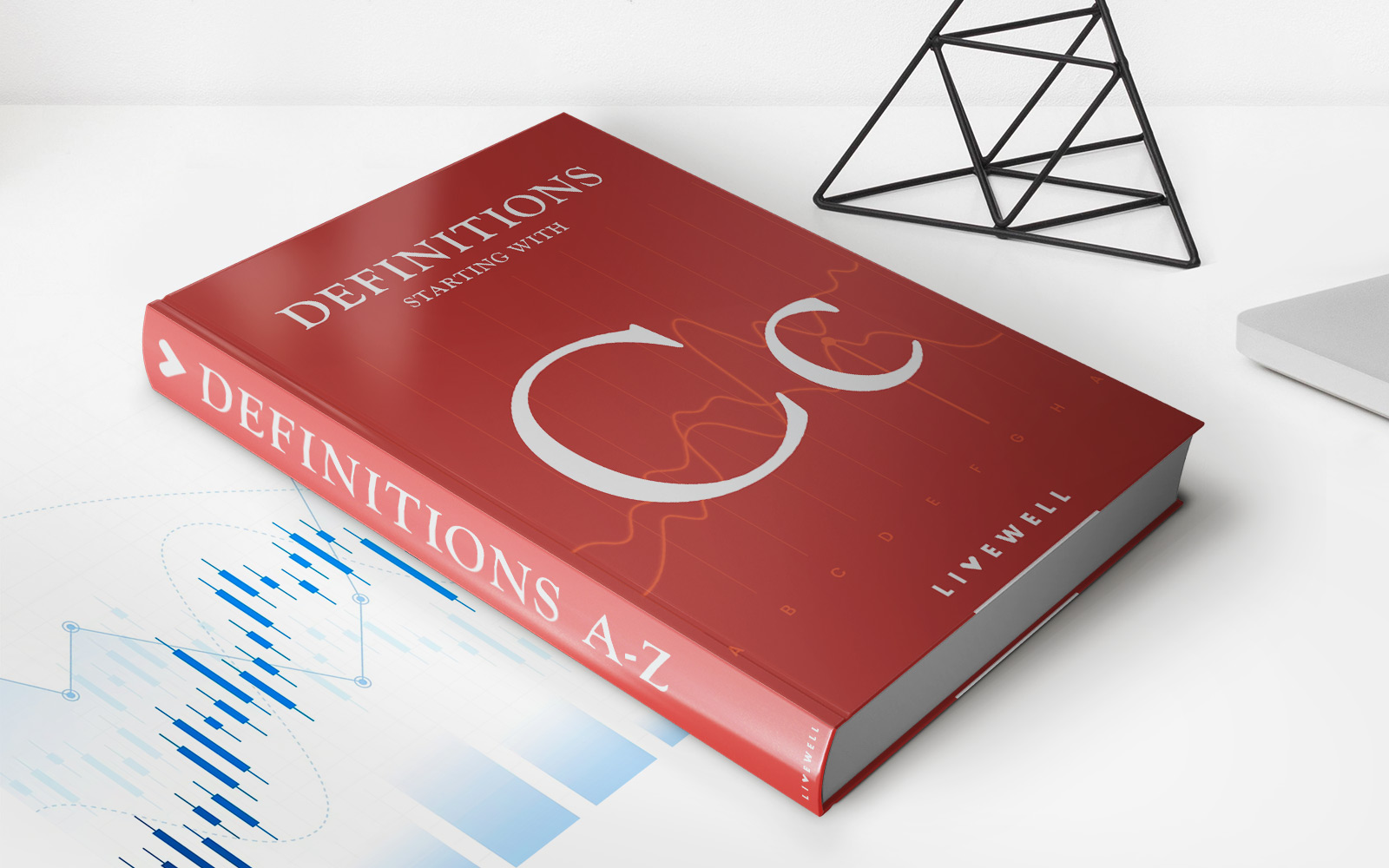

Finance
How To Leverage Life Insurance
Published: October 14, 2023
Learn how to leverage life insurance for your financial needs. Protect your loved ones and secure your future with smart financial planning.
(Many of the links in this article redirect to a specific reviewed product. Your purchase of these products through affiliate links helps to generate commission for LiveWell, at no extra cost. Learn more)
Table of Contents
- Introduction
- Understanding Life Insurance
- Determining Your Life Insurance Needs
- Choosing the Right Type of Life Insurance
- Evaluating Different Life Insurance Providers
- Applying for Life Insurance
- Paying Premiums and Managing Your Life Insurance Policy
- Making the Most of Your Life Insurance Policy
- Conclusion
Introduction
Welcome to our comprehensive guide on how to leverage life insurance. Life insurance is a crucial financial tool that provides a safety net for your loved ones in the event of your passing. It offers financial protection and peace of mind, ensuring that your family can maintain their standard of living and cover essential expenses.
While life insurance is a necessary expense, it can also be an effective wealth-building and investment strategy. By understanding how to leverage life insurance, you can maximize its potential benefits and use it as a valuable financial tool.
In this guide, we will delve into the various aspects of life insurance, including understanding its purpose, determining your insurance needs, choosing the right type of life insurance, evaluating different providers, applying for a policy, managing premiums, and making the most out of your life insurance policy.
Whether you are a young professional just starting a family or nearing retirement, this guide will help you navigate the complex world of life insurance and make informed decisions to secure your future.
Before we dive into the specifics, it’s important to note that life insurance needs vary depending on individual circumstances. It’s always recommended to consult with a financial advisor or an insurance professional to assess your unique situation and find the most suitable coverage for your needs.
Now, let’s explore the world of life insurance and discover how you can leverage it to safeguard your family’s financial future and achieve your long-term goals.
Understanding Life Insurance
Life insurance is a contract between an individual (the insured) and an insurance company (the insurer). It provides a death benefit – a lump sum of money – to the designated beneficiaries upon the insured person’s death. This financial protection ensures that the insured’s loved ones can continue to meet their financial obligations and maintain their standard of living.
The primary purpose of life insurance is to provide financial security for your dependents in the event of your untimely death. It can help cover various expenses, such as funeral costs, outstanding debts, mortgage payments, college tuition, and daily living expenses.
Life insurance policies are typically categorized into two main types: term life insurance and permanent life insurance.
- Term life insurance: Term life insurance provides coverage for a specified period, such as 10, 20, or 30 years. If the insured person passes away within the term, the beneficiaries receive the death benefit. Term life insurance is generally more affordable and straightforward, making it an excellent choice for individuals looking for temporary coverage.
- Permanent life insurance: Permanent life insurance, as the name suggests, provides coverage for the insured person’s entire lifetime as long as the premiums are paid. It also has a cash value component that grows over time, offering an investment feature in addition to the death benefit. Permanent life insurance policies include whole life, universal life, and variable life insurance.
Understanding the different types of life insurance policies and their features is essential in determining the most suitable option for your needs. Consider factors such as your age, health, financial goals, and budget when selecting a policy.
It’s worth noting that life insurance premiums are influenced by various factors, including the insured person’s age, health condition, lifestyle choices, occupation, and the amount of coverage. Younger individuals in good health generally pay lower premiums compared to older individuals or those with pre-existing medical conditions.
Having a basic understanding of life insurance and its various components is the first step towards leveraging it effectively. In the next sections, we will explore how to determine your life insurance needs, choose the right type of policy, evaluate insurance providers, and make the most of your life insurance coverage.
Determining Your Life Insurance Needs
When it comes to life insurance, one size does not fit all. The amount of coverage you need depends on various factors, including your income, financial obligations, and future goals. By carefully assessing your needs, you can ensure that your life insurance policy provides adequate protection for your loved ones.
Here are some key considerations to help determine your life insurance needs:
- Income Replacement: One of the primary purposes of life insurance is to replace the income that your loved ones would lose if you were no longer around. Consider your annual income and the number of years your family would need financial support.
- Debts and Liabilities: Take into account any outstanding debts, such as mortgages, car loans, student loans, or credit card balances. Your life insurance coverage should be sufficient to pay off these debts, ensuring that your family is not burdened by them.
- Education Expenses: If you have children, think about their educational needs. Estimate the cost of their college tuition and other educational expenses to include in your life insurance calculation.
- Final Expenses: Funerals and other end-of-life expenses can be costly. Include an estimate for these expenses in your life insurance coverage to provide financial assistance to your family during a difficult time.
- Future Goals: Consider any future goals you may have, such as starting a business, buying a second home, or retiring comfortably. Your life insurance coverage should take these goals into account and provide the necessary financial support to achieve them.
After taking these factors into consideration, you’ll have a rough estimate of the amount of life insurance coverage you need. Keep in mind that everyone’s situation is unique, and it’s crucial to reassess your needs periodically, especially in major life events such as getting married, having children, or purchasing a home.
It’s important to strike a balance between having enough coverage to meet your needs and maintaining an affordable premium. Consider your budget and what you can comfortably afford without compromising on adequate coverage.
Once you have determined your life insurance needs, you can proceed to the next step of choosing the right type of life insurance policy that aligns with your goals and budget. In the next section, we will explore the different types of life insurance policies available and their features to help you make an informed decision.
Choosing the Right Type of Life Insurance
Choosing the right type of life insurance policy is crucial to ensure that your coverage aligns with your specific needs and financial goals. Understanding the different options available can help you make an informed decision.
Here are the main types of life insurance policies to consider:
- Term Life Insurance: Term life insurance provides coverage for a specific term, typically 10, 20, or 30 years. It offers protection for a predetermined period, making it an excellent choice for those who have temporary financial obligations. Term life insurance policies have lower premiums compared to permanent policies, making them more affordable.
- Whole Life Insurance: Whole life insurance is a type of permanent life insurance that provides coverage for the entire lifetime of the insured person, as long as premiums are paid. It has a cash value component that grows over time, offering a savings element in addition to the death benefit. Whole life insurance policies have fixed premiums and guaranteed cash value growth.
- Universal Life Insurance: Universal life insurance is another type of permanent life insurance that offers flexibility in premium payments and death benefit amounts. It combines a death benefit with a savings component, allowing policyholders to adjust the coverage and premiums based on their changing needs.
- Variable Life Insurance: Variable life insurance is a form of permanent life insurance that allows policyholders to invest a portion of their premiums in various investment options, such as stocks and bonds. The cash value and death benefit of the policy fluctuate based on the performance of the chosen investments.
When choosing the right type of life insurance, consider your specific needs and financial situation. If you require coverage for a specific period and want affordable premiums, term life insurance may be suitable. If you prefer lifelong coverage with a guaranteed cash value component, whole life or universal life insurance might be a better choice.
It’s important to note that each type of life insurance policy has its advantages and disadvantages. Consult with a financial advisor or insurance professional to evaluate your options and determine which type of policy best fits your unique circumstances.
In addition to the type of policy, consider the financial stability and reputation of the insurance company. Research different providers, check their ratings and reviews, and assess their track record in handling claims.
Choosing the right type of life insurance is a crucial step in leveraging this financial tool effectively. In the next section, we will discuss how to evaluate different life insurance providers to ensure that you select a reliable and reputable company.
Evaluating Different Life Insurance Providers
When it comes to choosing a life insurance provider, it’s important to carefully evaluate your options to ensure that you select a reliable and reputable company. The right provider will offer the coverage you need at competitive rates, provide excellent customer service, and have a strong financial standing.
Here are some factors to consider when evaluating different life insurance providers:
- Financial Stability: It’s crucial to choose a provider with a strong financial foundation and a good track record of meeting its financial obligations. Research the provider’s financial ratings from reputable rating agencies like A.M. Best, Moody’s, or Standard & Poor’s. These ratings reflect the company’s financial stability and ability to fulfill its policyholder obligations.
- Product Selection: Consider the range of life insurance products offered by the provider. Look for flexibility in policy types and coverage options to ensure that you can find a policy that meets your specific needs.
- Customer Service: A reliable life insurance provider should have a reputation for excellent customer service. Look for reviews and feedback from current policyholders to gain insights into the provider’s responsiveness, clarity of communication, and the ease of claims process.
- Premium Rates: Compare premium rates among different providers to ensure that you are getting the best value for your money. However, remember that the cheapest option may not always be the best. Consider the provider’s reputation, financial stability, and the coverage offered along with the premium rates.
- Underwriting Process: Understanding the provider’s underwriting process is crucial. The underwriting process involves evaluating and assessing your risk profile, including your health history, lifestyle choices, and other factors that can impact your premiums. Look for a provider that has a transparent and efficient underwriting process.
- Policy Flexibility: Consider the provider’s policy flexibility, such as the ability to increase or decrease coverage, adjust premium payments, or convert term policies into permanent policies. Flexibility can be valuable as your needs change over time.
Take the time to research and compare multiple life insurance providers to ensure that you make an informed decision. Seek recommendations from trusted advisors or friends who have experience with life insurance and gather as much information as possible.
Remember, life insurance is a long-term commitment, and you want to choose a provider that will be there for you and your loved ones when it matters most. By evaluating different life insurance providers based on these factors, you can select a provider that offers the right coverage, competitive rates, and exceptional customer service.
Once you have chosen a provider, you can proceed with the application process. In the next section, we will discuss the steps involved in applying for a life insurance policy and what to expect during this process.
Applying for Life Insurance
Applying for a life insurance policy involves several steps to ensure that the insurance provider has the necessary information to assess your risk and determine your premium. Understanding the application process can help you navigate through it smoothly and increase your chances of approval.
Here are the key steps involved in applying for life insurance:
- Research and Comparison: Before applying, research different life insurance providers and compare their offerings, including coverage options and premium rates. Consider factors such as financial stability, customer reviews, and policy flexibility to select an insurance company that aligns with your needs.
- Consultation with an Agent or Advisor: It’s recommended to consult with an agent or financial advisor to assess your insurance needs and guide you through the application process. They can help you determine the appropriate coverage amount, policy type, and answer any questions you may have.
- Completing the Application: Once you have chosen a provider, you will need to complete the application form. The form will typically require personal information such as your age, occupation, health history, lifestyle choices, and beneficiary details. Answer all questions accurately and provide any necessary supporting documentation.
- Medical Examination: In most cases, life insurance providers require a medical examination as part of the application process. This examination may include a physical examination, blood tests, and other relevant medical tests. The results help the provider assess your health and determine your risk profile.
- Underwriting Process: After receiving your application and medical exam results, the insurance provider will begin the underwriting process. During this process, they review your information, assess your risk, and determine your insurability and premium rates. The underwriting process may take several weeks, depending on the complexity.
- Premium Determination: Based on the results of the underwriting process, the insurance provider will determine the premium amount for your policy. The premium is the amount you pay regularly to keep the coverage active. Factors such as age, health, and the coverage amount will influence the premium rates.
- Purchase and Issuance: If your application is approved, you will receive an insurance policy offer outlining the coverage details and premium amount. Review the offer carefully to ensure it aligns with your expectations and needs. If you agree, you can accept the offer by signing the necessary paperwork and paying the initial premium.
It’s important to provide accurate and complete information during the application process to avoid any complications or potential issues with your policy. Be truthful about your health history, lifestyle choices, and any other relevant details that may impact the underwriting decision.
Keep in mind that each insurance provider may have specific procedures and requirements, so it’s essential to follow their instructions and provide any additional information or documentation they request.
By understanding and following these steps, you can navigate the life insurance application process with ease. Once you have your policy in place, managing your premiums and maximizing the benefits of your life insurance coverage become the next important steps, which we will explore in the following sections.
Paying Premiums and Managing Your Life Insurance Policy
Once you have purchased a life insurance policy, it’s important to stay up-to-date with premium payments and effectively manage your policy to ensure its continued coverage and maximize its benefits. Here are some key points to consider:
- Understand Premium Payments: Premiums are the regular payments you make to keep your life insurance policy active. Different policies have varying premium payment frequencies, such as monthly, quarterly, or annually. It’s crucial to understand the payment schedule and ensure timely payments to avoid policy cancellation.
- Payment Methods and Options: Insurance companies offer various payment methods, such as electronic funds transfer (EFT), credit card payments, or check payments. Choose the method that is most convenient for you and consider setting up automatic payments to ensure consistent premium payment.
- Budgeting for Premiums: Incorporate your life insurance premiums into your budget to ensure you can comfortably afford the payments. If you are facing financial difficulties, reach out to your insurance provider to explore available options, such as adjusting the coverage amount or restructuring the policy to align with your current circumstances.
- Review and Update Your Policy: Regularly review your life insurance policy to ensure it still meets your needs and goals. Life circumstances change over time, and it’s important to update your policy accordingly. If you experience significant life events such as marriage, divorce, birth of a child, or a change in financial situation, consider revisiting your coverage amount and beneficiaries.
- Beneficiary Designation: Keep your beneficiary designation up to date. Review your policy periodically and update the beneficiaries if needed. It’s essential to ensure that your loved ones are correctly designated to receive the death benefit in the event of your passing.
- Policy Riders: Explore any additional policy riders or endorsements that may be available to enhance or customize your coverage. Riders can provide added benefits such as accelerated death benefit riders, which allow you to access a portion of the death benefit if you are diagnosed with a terminal illness.
- Communication with Your Insurance Provider: Maintain open lines of communication with your insurance provider. Notify them of any changes in contact information, address, or banking details. If you have any questions or concerns regarding your policy, reach out to your provider for guidance and assistance.
- Regular Policy Reviews: Periodically review your policy to ensure it aligns with your current needs, financial goals, and budget. Consider working with a financial advisor or insurance professional who can help you assess your coverage and make any necessary adjustments.
By staying on top of premium payments, reviewing and updating your policy, and maintaining open communication with your insurance provider, you can effectively manage your life insurance policy and optimize its benefits.
It’s also important to keep your loved ones informed about your life insurance policy. Share the policy details, including the provider’s contact information and policy documents, with your designated beneficiaries. This ensures that they are aware of the coverage and can take the necessary steps to claim the death benefit when the time comes.
Lastly, take advantage of any resources and educational materials provided by your insurance provider. They can offer insights and guidance on how to maximize your policy’s benefits, assist with claims, and provide updates on policy features or changes.
By actively managing your life insurance policy, you can effectively protect your loved ones and make the most out of your coverage.
Making the Most of Your Life Insurance Policy
Having a life insurance policy in place is an important step towards protecting your loved ones and securing their financial future. To maximize the benefits of your policy, consider the following tips:
- Regularly Review Your Coverage: Life circumstances change over time, so it’s important to review your coverage periodically. Evaluate whether the coverage amount is still sufficient to meet your family’s needs and make adjustments if necessary. Significant life events such as marriage, divorce, birth of a child, or a change in financial situation may warrant a policy review.
- Understand Policy Features and Riders: Familiarize yourself with the various features and riders offered by your life insurance policy. Some policies may include options such as cash value accumulation, conversion privileges, or accelerated death benefit riders. Understanding these features can help you take advantage of additional benefits if needed.
- Consider the Tax Advantages: Life insurance policies typically offer tax advantages. The death benefit is generally tax-free for the beneficiaries, and in some cases, the cash value accumulation component may offer tax-deferred growth. Consult with a tax advisor to fully understand the tax implications of your specific policy.
- Stay Informed About Policy Updates: Keep up-to-date with any updates or changes to your life insurance policy. Stay in touch with your insurance provider and review any communication they send regarding policy updates, new features, or potential premium changes. Being aware of these updates allows you to make informed decisions about your coverage.
- Explore Policy Conversion Options: If you had initially purchased a term life insurance policy but find that you now need permanent coverage, explore the conversion options provided by your insurer. Converting to a permanent policy can allow you to maintain coverage without having to undergo additional underwriting or medical examinations.
- Communicate with Beneficiaries: Sharing information about your life insurance policy with your beneficiaries is essential. Make sure they are aware of the policy’s details, such as the coverage amount and the insurance provider’s contact information. This ensures a smooth claims process and helps guarantee that the intended recipients receive the death benefit.
- Inform Your Loved Ones: It’s crucial to inform your loved ones about the existence of your life insurance policy. Make sure they know who the policy beneficiaries are and where to locate the relevant policy documents. This will ensure that they can take the necessary steps to make a claim in a timely manner.
- Regularly Assess Your Financial Needs: As your financial situation evolves, assess your life insurance needs in conjunction with your overall financial plan. If you experience changes such as paying off debts, accumulating savings, or reaching retirement milestones, you may want to reevaluate your coverage and potentially adjust it accordingly.
By following these tips, you can make the most out of your life insurance policy and ensure that it continues to align with your financial goals and the needs of your loved ones. Remember to regularly communicate with your insurance provider, stay informed, and review your policy to adapt to any changing circumstances.
Lastly, review your policy periodically with a financial advisor or insurance professional. They can provide valuable insights and help you make informed decisions about your coverage, ensuring that you have the right life insurance policy in place for your unique situation and goals.
Conclusion
Congratulations! You have reached the end of our comprehensive guide on how to leverage life insurance. Understanding the importance of life insurance and how to effectively utilize it can provide you with peace of mind and ensure the financial security of your loved ones.
We began our journey by exploring the purpose of life insurance and the different types available, such as term life insurance and permanent life insurance. We then delved into determining your life insurance needs, considering factors such as income replacement, debts, education expenses, and future goals.
Next, we discussed choosing the right type of life insurance and evaluating different providers. It’s crucial to select a trustworthy and reputable insurance company that aligns with your needs, offers competitive rates, and provides excellent customer service.
Applying for a life insurance policy was the next step we covered, highlighting the importance of accurate information and a transparent underwriting process. We then explored the importance of paying premiums on time, managing your policy, and keeping it up to date to ensure continued coverage and maximize the benefits it provides.
Lastly, we discussed strategies for making the most of your life insurance policy, including regularly reviewing your coverage, understanding policy features and riders, staying informed about policy updates, and maintaining open communication with your beneficiaries.
Remember, life insurance is a crucial component of a well-rounded financial plan. It provides protection, peace of mind, and financial support to your loved ones during difficult times. By understanding your needs, selecting the right policy, and effectively managing it, you can leverage life insurance as a valuable tool for securing the future and achieving your financial goals.
We hope that this guide has provided you with valuable insights and empowered you to make informed decisions about your life insurance coverage. However, it’s important to consult with a financial advisor or insurance professional to tailor your life insurance strategy to your unique circumstances.
Thank you for joining us on this journey of understanding and leveraging life insurance. Here’s to a secure and prosperous future for you and your loved ones!














